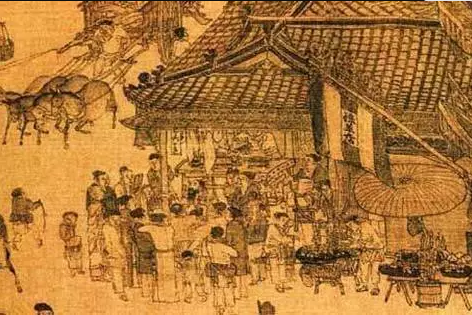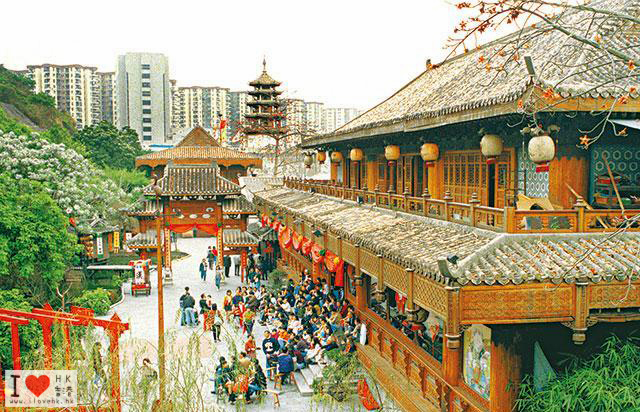“Documentary of Sung Dynasty Bianjing City” is an authentic and original travel special of Bianjing in the Sung Dynasty, written from the perspective of the ordinary people in the Sung Dynasty era. This book records the life and city scenes of the Sung citizen in Bianjing (the capital of the Northern Song Dynasty), from the habits of the royal family and aristocrats to the traditions of the ordinary people. It is very detailed.
The author wrote this book after Aisin Gurun invaded Sung. The former city of Bianjing has become decadent, but the prosperous image is unforgettable in his heart. The homesickness for him is beyond words. He can only use his memory to recreate everything about his hometown by writing his book. It was with deep pain and nostalgia that he lost the place where he lived. He has expressed his hope that future generations can see some of the stories and people in Bianjing in the Northern Sung Dynasty. This book is striking and life-like, without much rhetoric and beautiful exposition, and has an authentic sense of the scene. At that time, the high level of education, the popularity of art, the diversification of restaurants, and the prosperous industry and commerce were all admired after reading, making me dream of “Sung City,” which is next to the “Lai Yuan Garden” in Hong Kong. Unfortunately, this place was permanently closed in 1997.
The food alone includes cooked pork belly, beef tripe, grilled chicken, roasted duck, and other delicacies. Many Chinese cuisine menus have surprisingly appeared in this book. Heading south from Kaifeng Mansion, there are plum buns from Wanglou Cave, Cao’s mother-in-law’s meat pie, and so on. Countless restaurants and restaurants with high-end decorations gathered in various markets, pharmacies, and residential areas.

According to the book, as soon as you exit from Zhuquemen in the capital to Longjin Bridge, you will pass the Zhouqiao to the south, and you will find a food street, which is very bustling at night, just like today’s night market. There are various types of snacks and desserts for sale here, as well as drinks. For example, sweet green bean drinks look like today’s herbal tea, barbecue, and various foods, as well as congee, barbecue, and other foods.

Although we can’t taste it and smell it, these dishes or snacks, which are stated in this book, have something similar to what we eat now. Therefore, these historical materials from almost a thousand years ago are excellent references for studying Chinese cuisine, its origins, and habits.

In Bianjing in the Sung Dynasty, you may find various Chinese cuisines gathered from many locations in China.
I still remember that my parents took me to Sung Dynasty Theme Park next to Lai Chi Kok Amusement Park once when I was young. As soon as I entered Sung Dynasty Theme Park, there were many terraces and pavilions. Various performance teams performed in several public corners or theatres, which was very lively. But now, Sung Dynasty Theme Park no longer exists, and all you can see now are the high-rise buildings. It can only leave those memories in people’s minds.
After reading “Documentary of Sung Dynasty Bianjing City” carefully, I realized that the small Sung Dynasty Theme Park in Mei Foo, compared with the real Sung Dynasty capital, is a small miniature of it, a very tiny one. But, although it is small, it recalls a small piece of Hong Kong’s rare Sung Dynasty culture and a paradise integrating academics and entertainment, full of happy childhood memories.
The way people entertained themselves changed rapidly in the 1980s. With the advent of movies and the popularization of mobile phones in 2002, social platforms emerged. Such changes have reorganized Hong Kong’s culture astonishingly over the years. But, in the diversified trend, where are these existing cultures?
